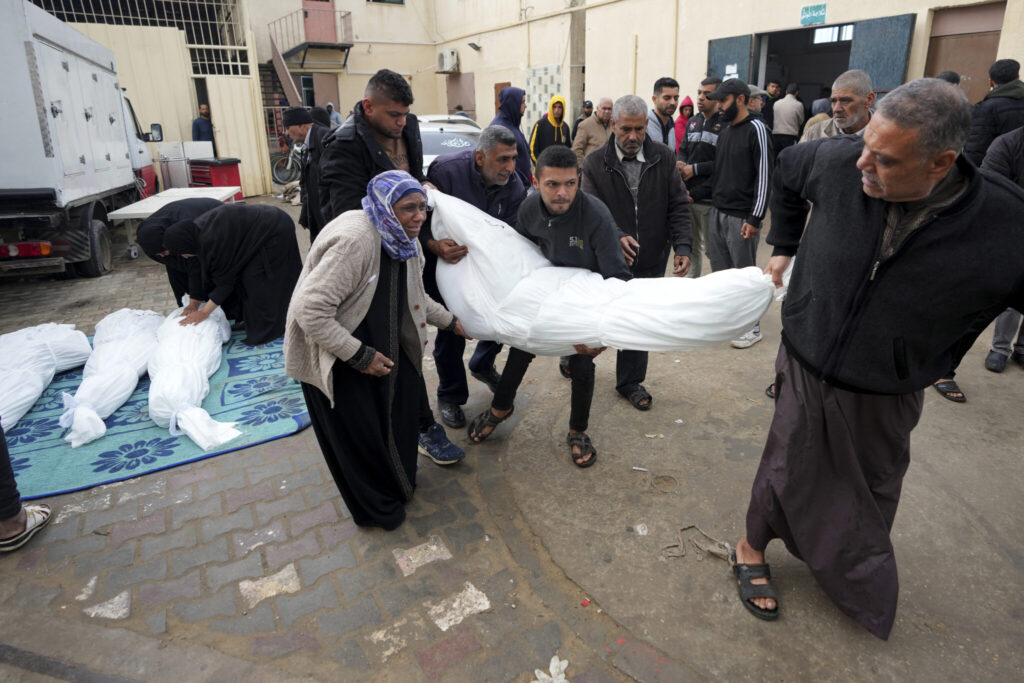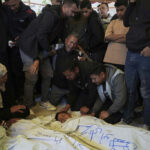Israeli forces stormed the main hospital in southern Gaza on Thursday, hours after Israeli fire killed a patient and wounded six others inside the complex. The Israeli army said it was a limited operation seeking the remains of hostages taken by Hamas.
Quick Read
- Hospital Raid in Gaza: Israeli forces conducted a raid at Nasser Hospital in Khan Younis, Gaza, following allegations of Hamas using the facility for military purposes.
- Casualties and Damage: The operation resulted in casualties, including the death of a patient and injuries to six others, amidst ongoing conflict in the region.
- Military Objectives: The Israeli army justified the raid as an effort to recover the remains of hostages allegedly held by Hamas at the hospital.
- Impact on Medical Services: The raid forced the relocation of medical staff and patients within the hospital, severely impacting patient care.
- Broader Conflict Escalation: The incident occurs against the backdrop of escalating tensions between Israel and Hamas, with growing concerns about a wider conflict involving Lebanon’s Hezbollah.
- Humanitarian Concerns: The ongoing war and military actions in Gaza have led to significant humanitarian challenges, including damage to healthcare infrastructure and civilian casualties.
The Associated Press has the story:
Israeli forces storm main hospital in S. Gaza, saying hostages were held there
Newslooks- RAFAH, Gaza Strip (AP) —
Israeli forces stormed the main hospital in southern Gaza on Thursday, hours after Israeli fire killed a patient and wounded six others inside the complex. The Israeli army said it was a limited operation seeking the remains of hostages taken by Hamas.
The raid came a day after the army sought to evacuate thousands of displaced people who had taken shelter at Nasser Hospital in the city of Khan Younis, the focus of Israel’s offensive against Hamas in recent weeks. The war shows no sign of ending, and the risk of a broader conflict is growing as Israel and Lebanon’s Hezbollah step up attacks after a particularly deadly exchange on Wednesday.
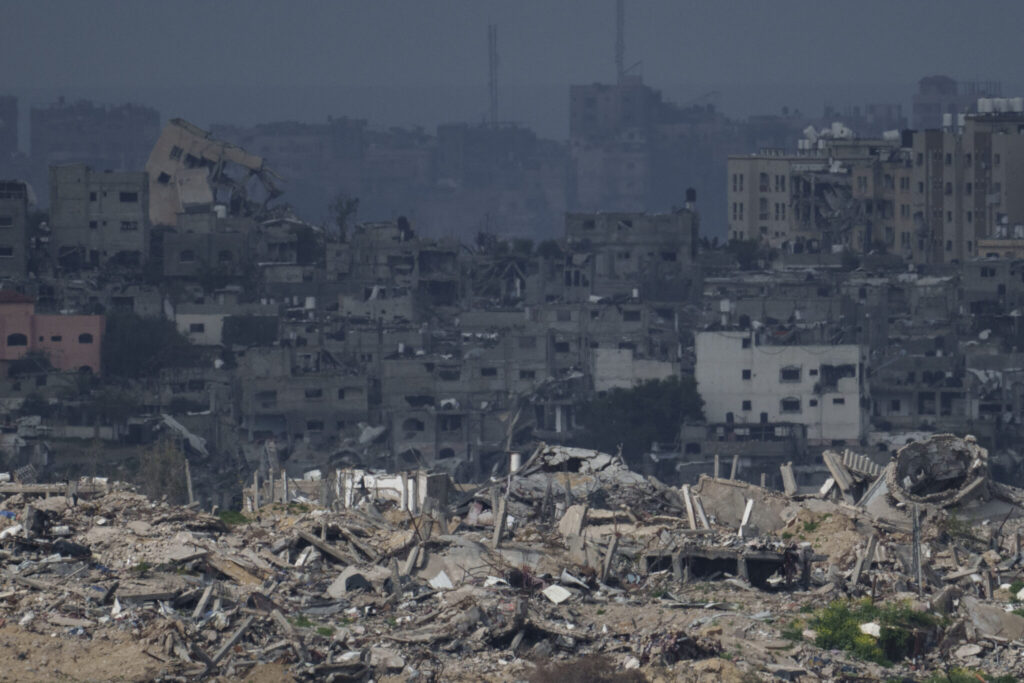
The military said it had “credible intelligence” that Hamas had held hostages at the hospital and that the hostages’ remains might still be inside. Rear Adm. Daniel Hagari, the chief military spokesperson, said forces were conducting a “precise and limited” operation there and would not forcibly evacuate medics or patients. Israel accuses Hamas of using hospitals and other civilian structures to shield its fighters.
A released hostage told The Associated Press last month that she and over two dozen other captives had been held in Nasser Hospital. International law prohibits the targeting of medical facilities, but they can lose those protections if they are used for military purposes.
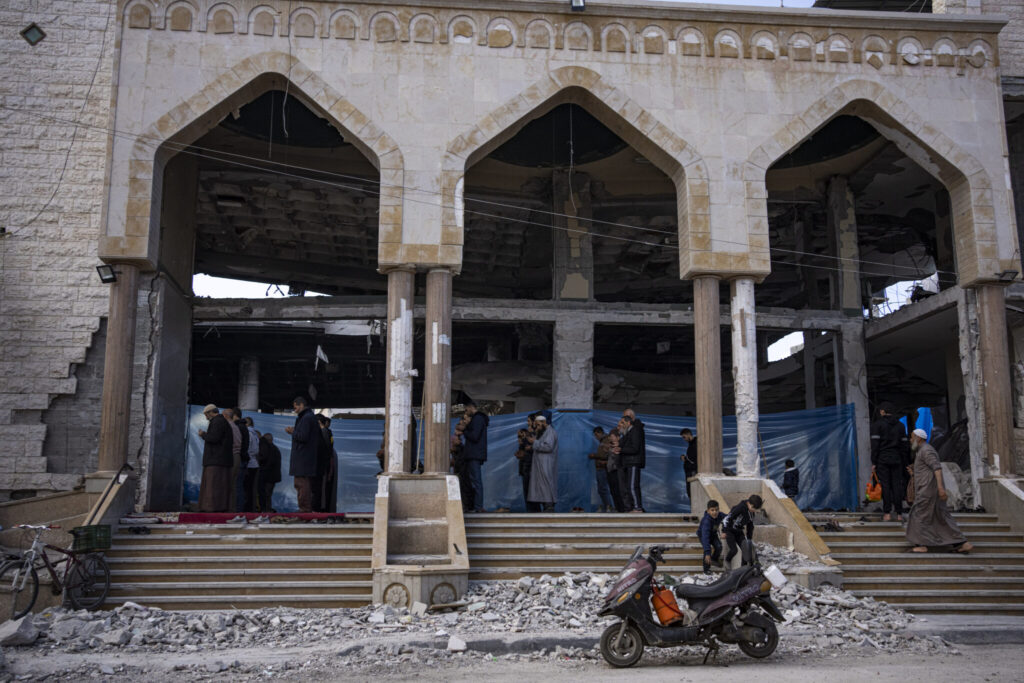
The troops were searching several hospital buildings after ordering all medical staff and patients to move into an older building in the compound, said Shaban Tabash, a nurse at the hospital. Doctors were unable to provide treatment to the patients in the building, which was not properly equipped.
“The situation of patients is difficult,” Tabash told the AP.
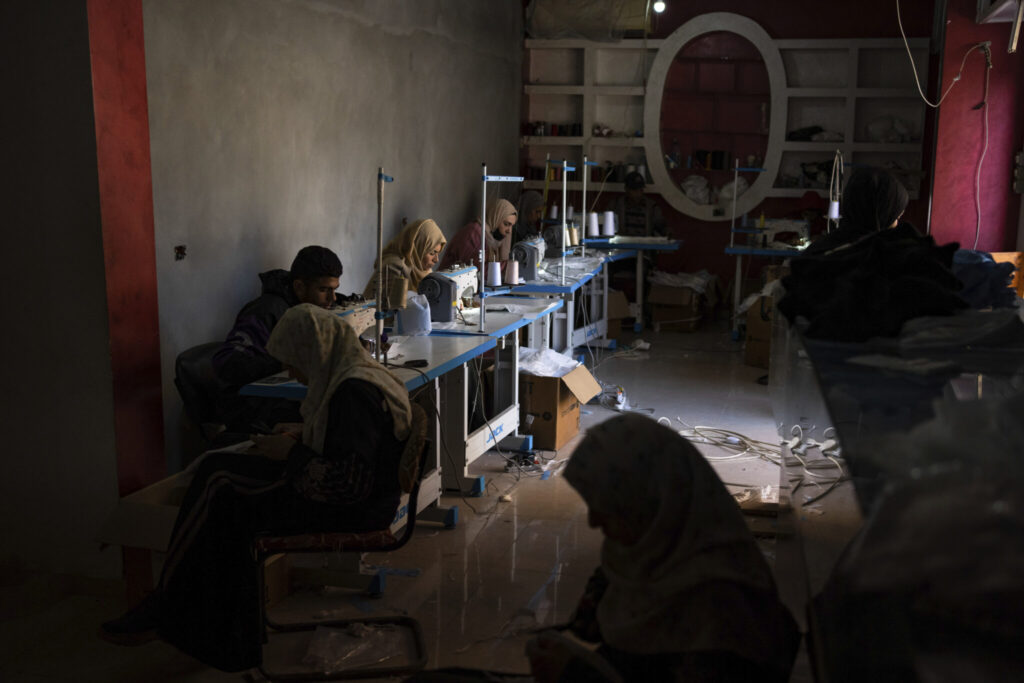
Separately, Israel launched airstrikes into southern Lebanon for a second day after killing 10 civilians and three Hezbollah fighters on Wednesday in response to a rocket attack that killed an Israeli soldier and wounded several others.
It was the deadliest exchange of fire along the border since the start of the Israel-Hamas war. Israel and Hezbollah — an ally of Hamas — have traded fire on a daily basis, raising the risks of a broader conflict.
Hezbollah has not claimed responsibility for Wednesday’s rocket attack. Sheikh Nabil Kaouk, a senior member of the group, said it is “prepared for the possibility of expanding the war” and would meet “escalation with escalation, displacement with displacement, and destruction with destruction.”
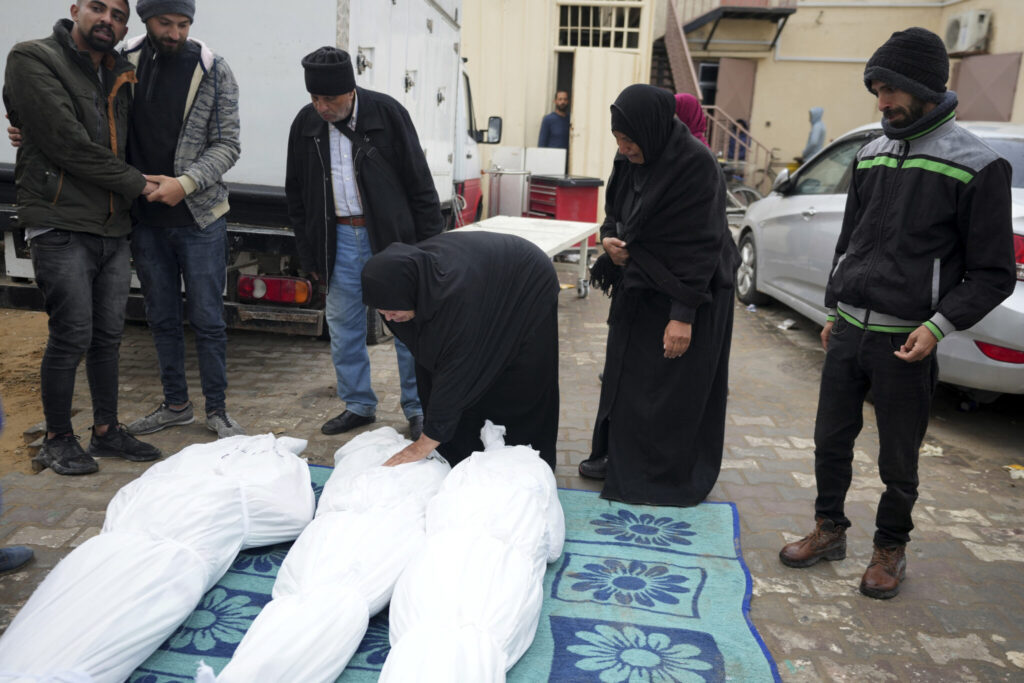
Negotiations over a cease-fire in Gaza, meanwhile, appear to have stalled, and Israeli Prime Minister Benjamin Netanyahu has vowed to continue the offensive until Hamas is destroyed and scores of hostages taken during the militants’ Oct. 7 attack.
SCENES OF PANIC IN HOSPITAL
Nasser Hospital has been the latest focus of Israeli military operations that have gutted Gaza’s health sector as it struggles to treat a constant stream of people wounded in daily bombardments. Israeli troops, tanks and snipers have surrounded the hospital for at least a week, with heavy fire all around it. Several people have been killed inside the compound in recent days, according to health officials.
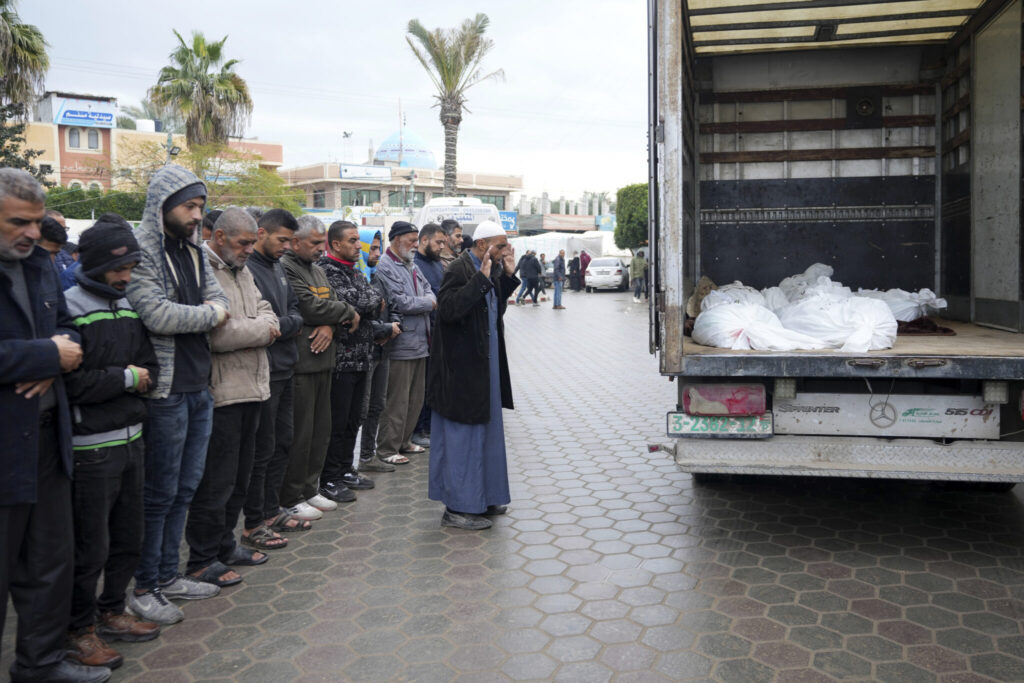
Overnight, a strike slammed into one of the hospital’s wards, and video showed medics scrambling to wheel patients on stretchers down a corridor filled with smoke or dust. A medic used a cellphone flashlight to illuminate a darkened room where a wounded man screamed in pain as gunfire echoed outside. The AP could not authenticate the video but the footage was consistent with its reporting.
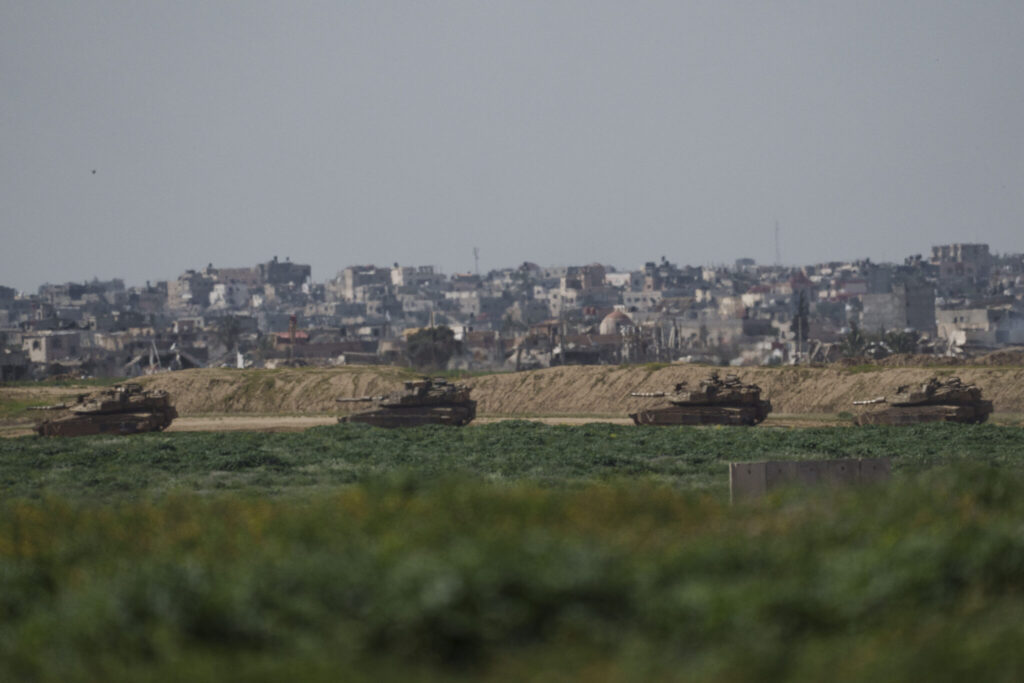
The strike killed one patient and wounded six others, all of whom were already being treated for previous wounds, Dr. Khaled Alserr, one of the remaining surgeons at Nasser Hospital, told the AP. “The situation is escalating every hour and every minute,” he said.
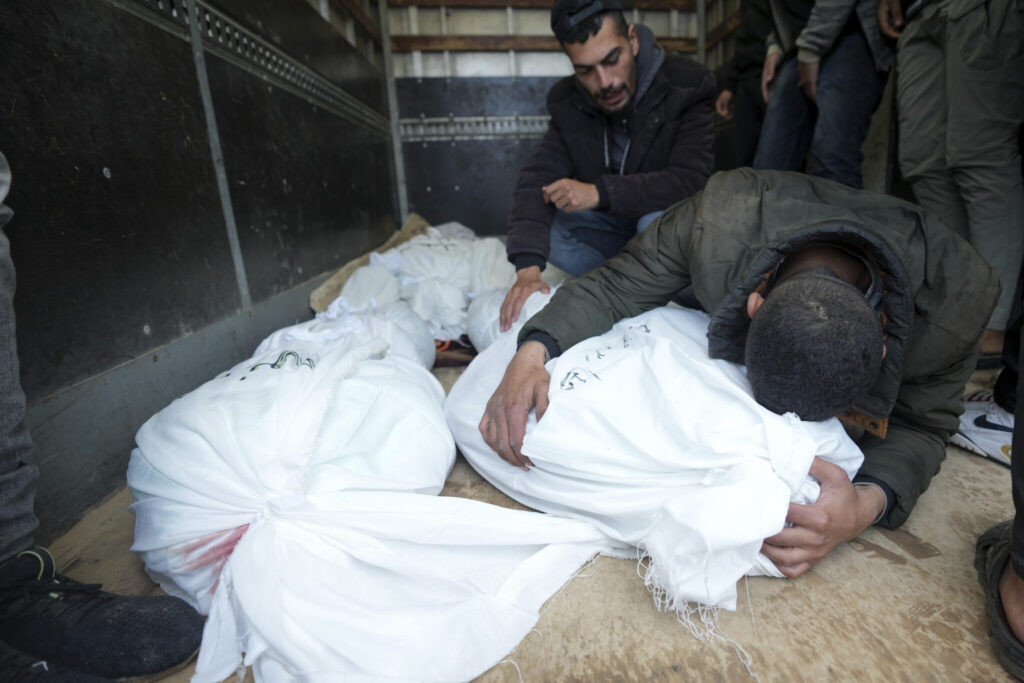
Hours later, troops moved into the hospital compound, staff said. Footage posted online showed patients massed together in the old hospital building, with a row of beds lining a hallway.
The international aid group Doctors Without Borders, also known by its French language acronym MSF, said its staff had to flee the hospital on Thursday, leaving patients behind, and that one staffer was detained at an Israeli checkpoint just outside the facility.
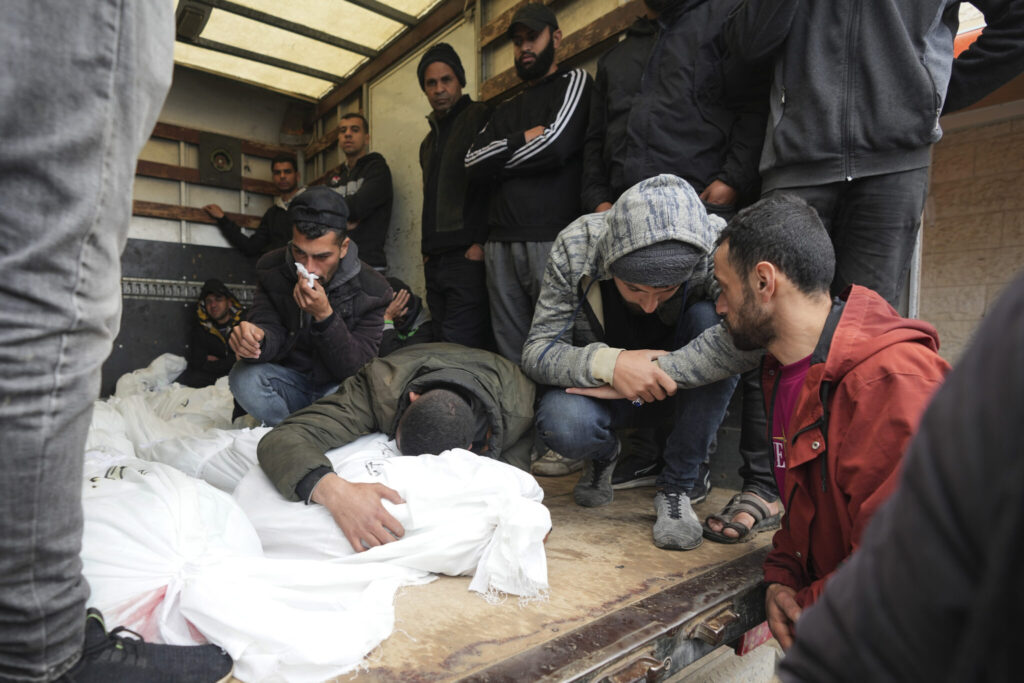
The military had ordered the evacuation of Nasser Hospital and surrounding areas last month. But as with other health facilities, medics said patients were unable to safely leave or be relocated, and thousands of people displaced by fighting elsewhere remained there.
“People have been forced into an impossible situation,” said Lisa Macheiner of MSF.
“Stay at Nasser Hospital against the Israeli military’s orders and become a potential target or exit the compound into an apocalyptic landscape where bombings and evacuation orders are a part of daily life.”
NO END IN SIGHT TO THE MONTHSLONG WAR
The war began when Hamas militants burst through Israel’s formidable defenses on Oct. 7 and rampaged through several communities, killing some 1,200 people and taking another 250 hostage. More than 100 of the captives were freed during a cease-fire last year in exchange for 240 Palestinian prisoners.
Around 130 captives remain in Gaza, a fourth of whom are believed to be dead. Netanyahu has come under intense pressure from families of the hostages and the wider public to make a deal to secure their freedom, but his far-right coalition partners could bring down his government if he is seen as being too soft on Hamas.
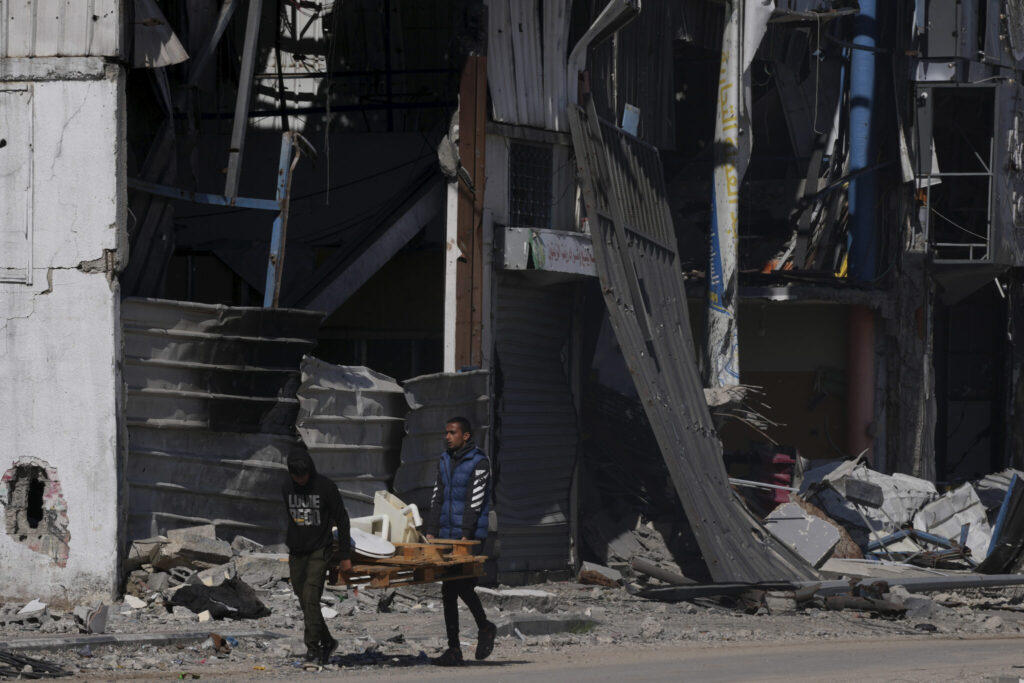
Israel responded to the Oct. 7 attack by launching one of the deadliest and most destructive military campaigns in recent history. Over 28,000 Palestinians have been killed, 80% of the population have fled their homes and a quarter are starving amid a worsening humanitarian catastrophe. Large areas in northern Gaza, the first target of the offensive, have been completely destroyed.
Hamas has continued to attack Israeli forces in all parts of Gaza, and says it will not release all the remaining captives until Israel ends its offensive and withdraws. Hamas is also demanding the release of a large number of Palestinian prisoners, including top militants.
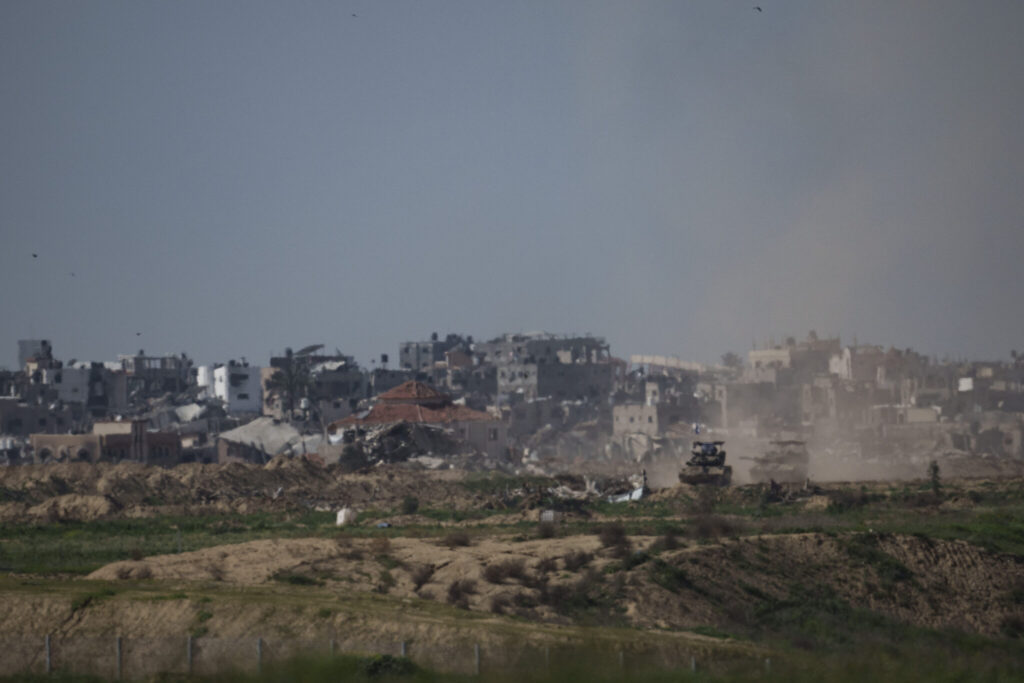
Netanyahu has rejected those demands, calling them “delusional.” He says Israel will soon expand its offensive into Gaza’s southernmost city of Rafah, on the Egyptian border. Over half of Gaza’s population of 2.3 million has sought refuge in Rafah after fleeing fighting elsewhere in the coastal enclave.
At least 28,663 Palestinians have been killed since the war began, mostly women and children, according to Gaza’s Health Ministry, which does not distinguish between civilians and combatants. Over 68,000 people have been wounded in the war.
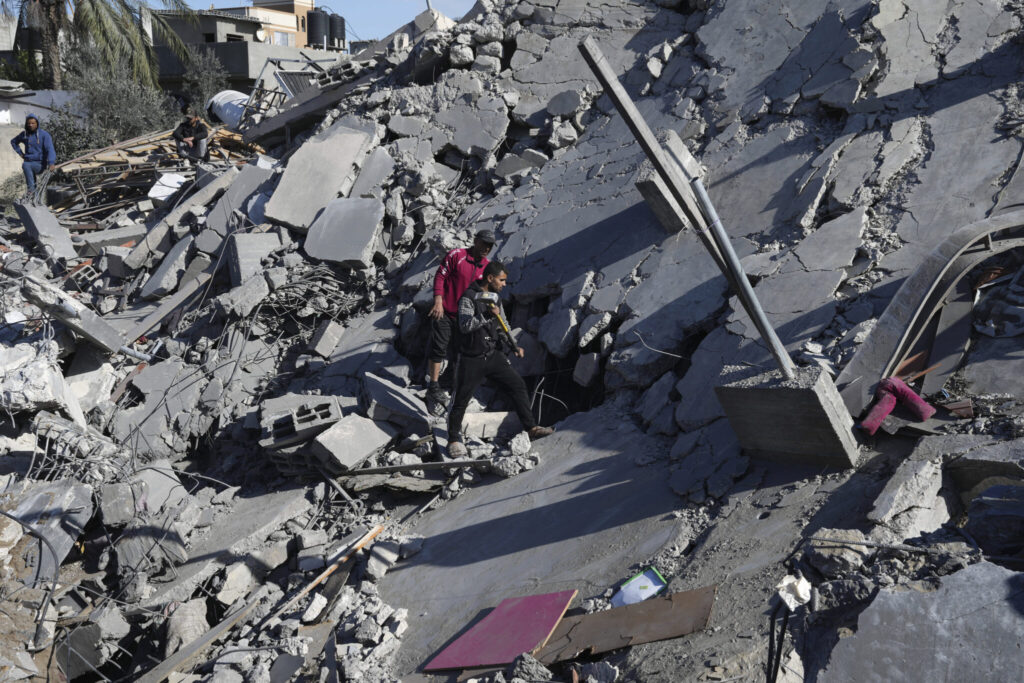
Airstrikes late Wednesday in central Gaza killed at least 11 people, including four children and five women, according to hospital records. Relatives gathered around bodies wrapped in white shrouds outside Al-Aqsa Martyrs Hospital in the central town of Deir al-Balah before the remains were placed in a truck to be taken for burial.
One man struggled to let go, lying down and holding one of the bodies on the truck as he wept.

